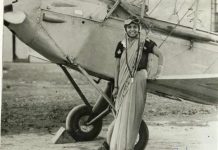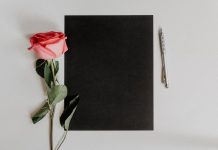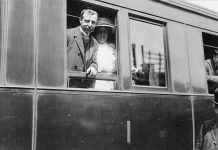Heinrich Kubis (1888-1979) was the first flight attendant in history. In this article we bring you an imaginary short, first-hand, partly romanticised tale celebrating the life of one of the pioneers of civil aviation professions.
My name is Heinrich Kubis and the story of my life is related to a letter opener. As a child, I would watch the revolving doors of big hotels in delight, enraptured by the shining chandeliers and impeccable staff uniforms.
I started working in hotels when I was very young. I would carry guests’ bags, exchanging a few polite words with them. Sometimes I would manage to get them to tell me their stories, finding out where they came from and where they were going, if they were travelling on business or to see a play. That’s how my career began.
I had good intuition, I could speak three languages and I understood people’s needs before they asked for a thing, remembering the names of regular customers and their favourite drinks. But I couldn’t travel myself, only by listening to the stories of the people I met. I worked in the most fashionable hotels in Europe, such as the Carlton in London and the Ritz in Paris, meeting rich businessmen, travelling salesmen, beautiful actresses and politicians. That’s how I met Count Ferdinand von Zeppelin and Doctor Hugo Eckener in 1912, founders of DELAG, an airline based in Frankfurt. They offered me the chance to leave the hotel industry and become the first airship butler in history. I accepted.
At work, I would wear an impeccable dinner suit, entertaining passengers to make their flight more pleasant. My role was fundamental: I knew the technical aspects of the airships, the safety rules and every corner of the LZ-120 Bodensee and the LZ-127 Graf Zeppelin. One day I’d be in Germany and the next I’d be in South America, then Manhattan. I was even lucky enough to be on the first around-the-world flight on an airship, leading a crew of 12.
On 6th May 1937, I was on board the LZ-129 Hindenburg, named in honour of President Paul von Hindenburg, who wore the Nazi flag, although Eckener’s views were very different from those of the Führer. We were about to land in Lakehurst, New Jersey, when the airship caught fire. It was the biggest ever built, with 97 people aboard including passengers and crew. I saved myself, along with many others, but 35 people died that day. I knew straight away that things would change for DELAG. The war came and everything else changed too. I never stopped thinking that an act of sabotage was hidden behind that accident.
Let’s get back to the letter opener.
I was the first flight attendant in the world, but nobody would ever have known if it wasn’t for a beautiful ivory letter opener engraved with “Kapt. Heinrich Kubis”. When it was found, it was thought to belong to a Captain, “Kapitan”, but there was no captain with my name. I owe the memory of my life to the curious man who discovered that Kapt. at the time was the title for the purser (the chief flight attendant), me, Heinrich Kubis.
(photo/mymilitaria.it)




